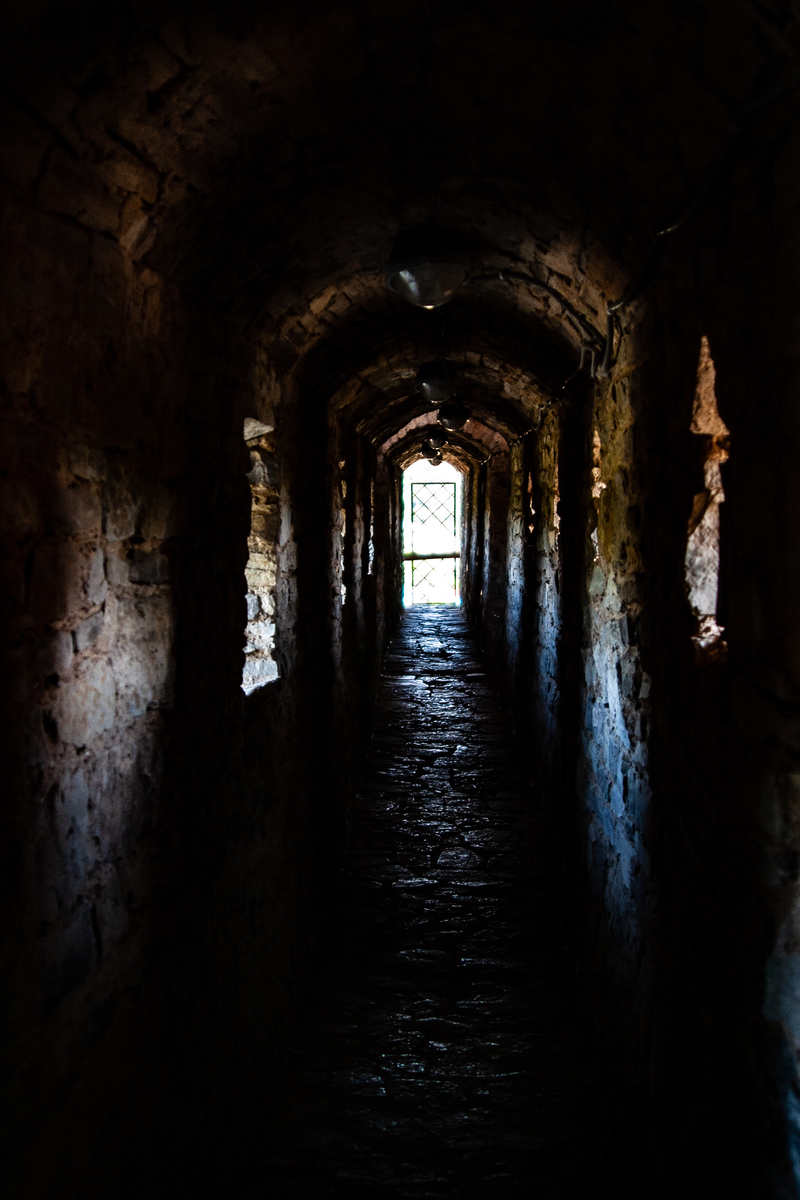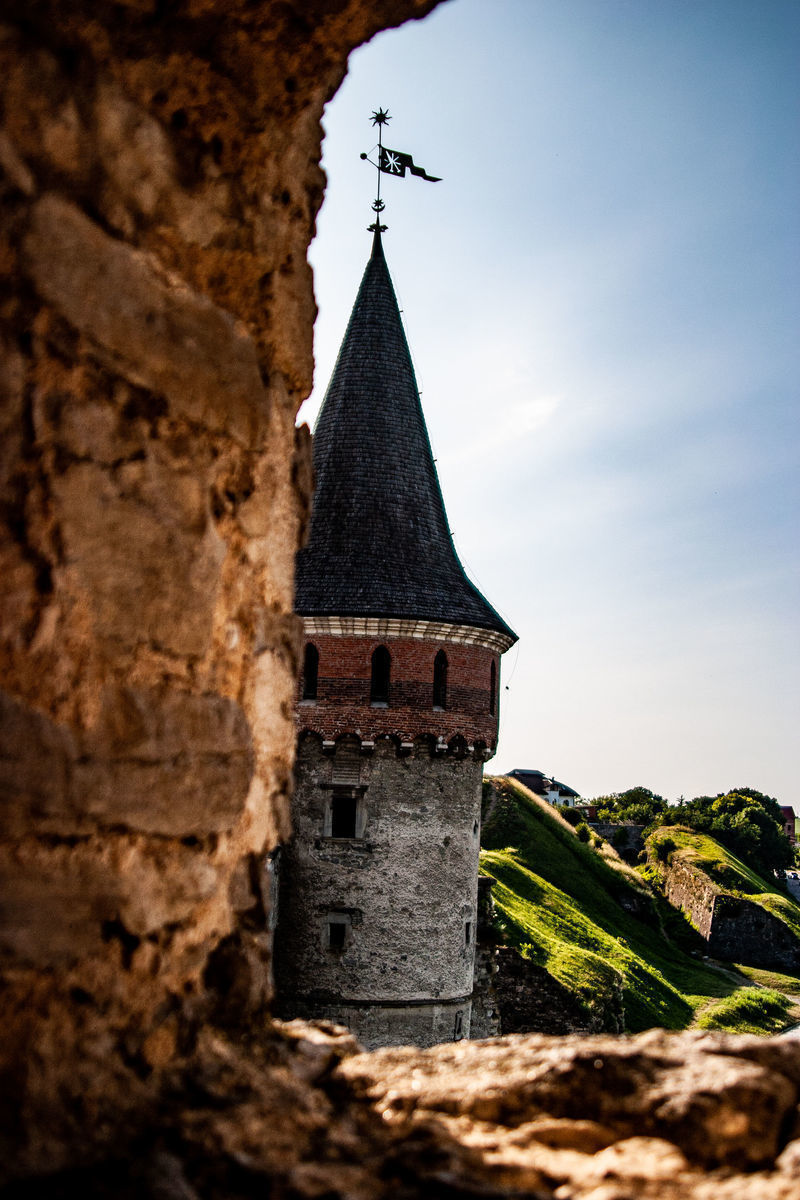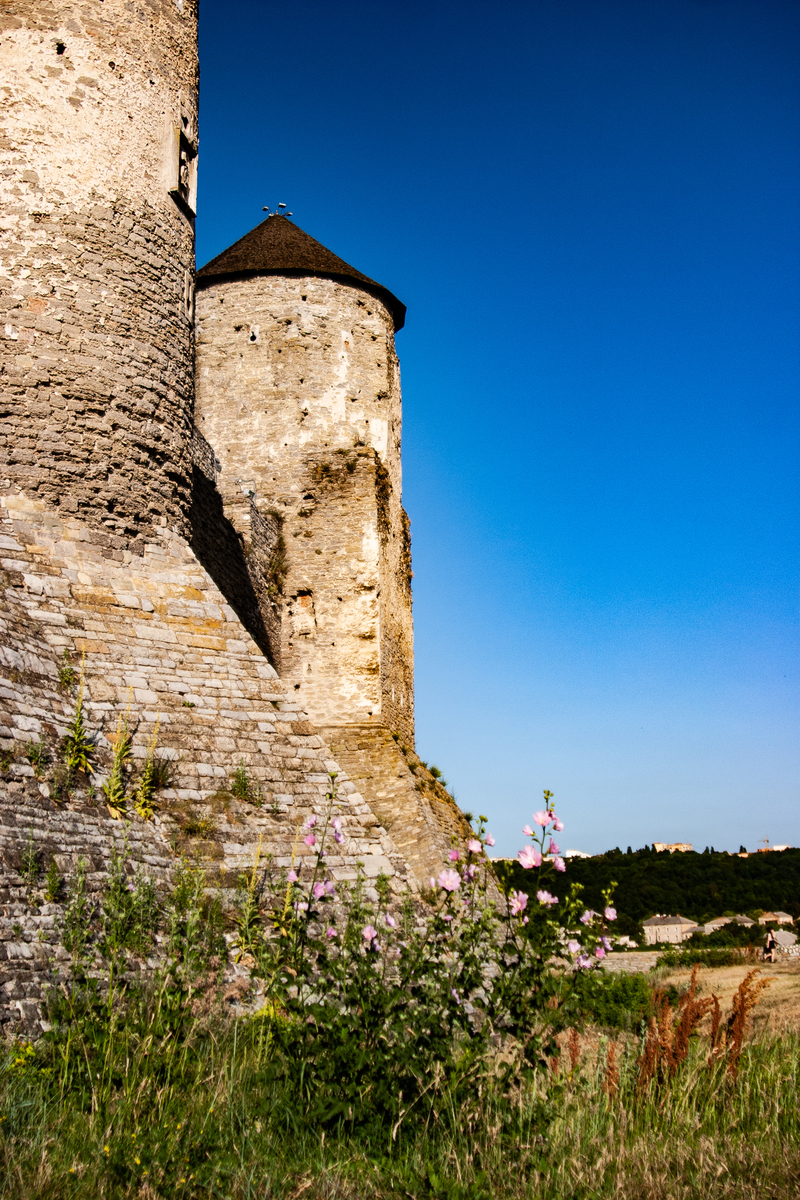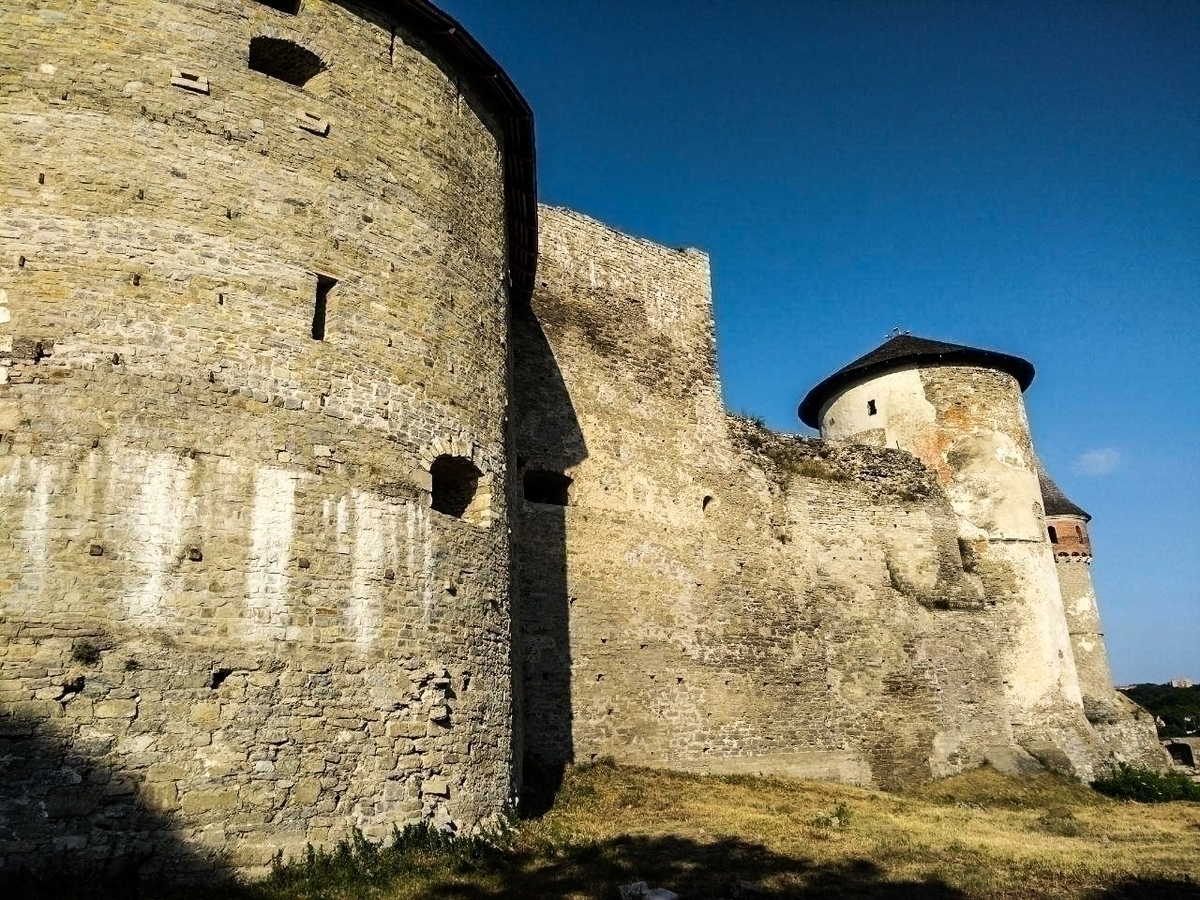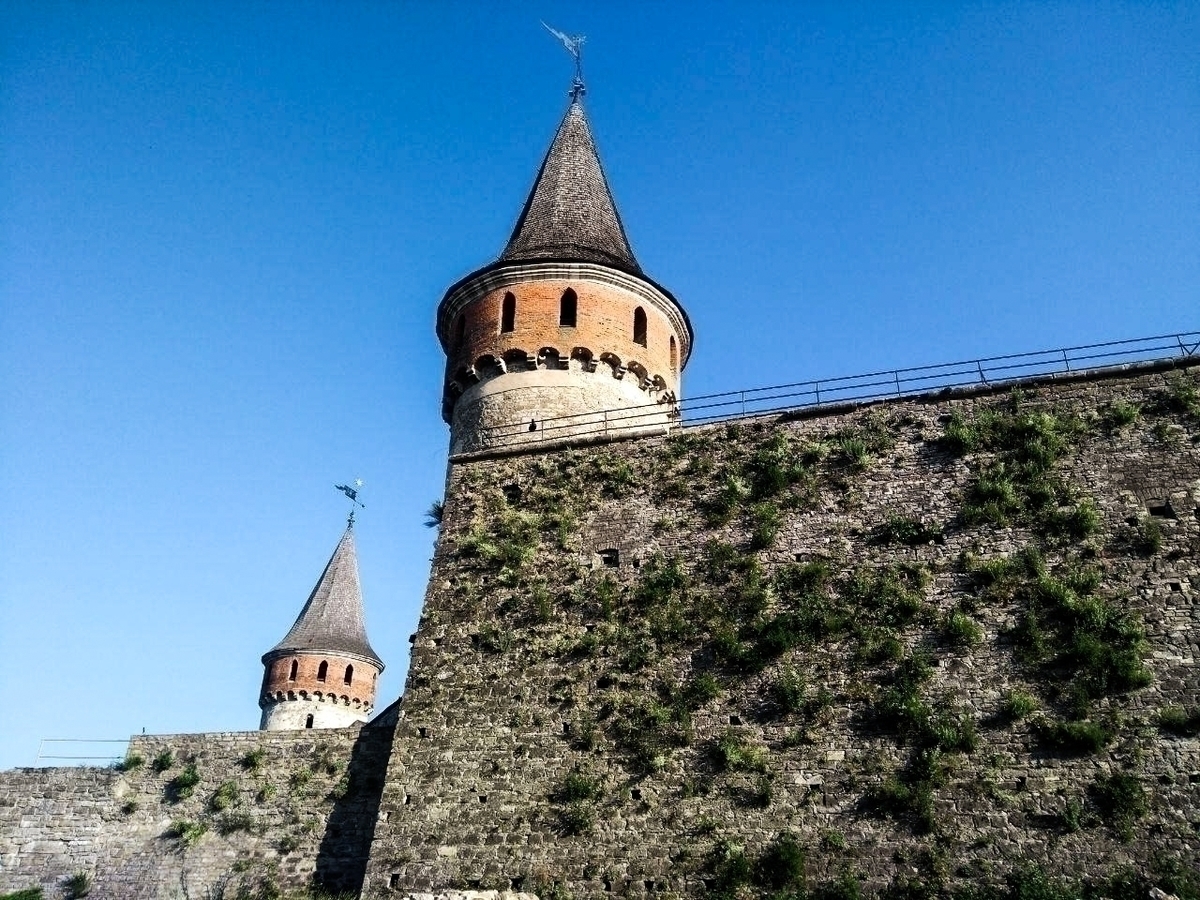Кам’янець-Подільська фортеця
Type: Architectural object Kind: Historical (Active)
Country: Ukraine Region: Khmelnytsky region Locality: Кам'янець-Подільський
Availability: State, Available for visits, Good road
Історія
Кам’янець-Подільська фортеця (Antimurale Christianitas – Форпост Християнства) була споруджена для захисту Турецького мосту, що є сполучним перешийком між Старим містом, укладеним в петлю річки, і “великою землею”.
На підставі археологічних даних відомо, що на території сучасної фортеці в IX – XII ст. існував дитинець із земляним валом і дерев’яною стіною, що захищав давньослов’янське поселення Галицько – Волинського князівства.
Дерев’яні укріплення були замінені на кам’яні після пожежі на рубежі XII – XIII ст. А вже в 1240 році орди Батия (1209 – 1255/1256), правителя улусу Джучі (Золотої Орди), розбивши стіни, увірвалися в місто і знищили його жителів. Внаслідок чого більш ніж на сторіччя Кам’янець перейшов під владу татаро – монгол.
Після поразки татар при Синіх Водах 1362 року від війська великого князя Литовського Ольгерда (літ. Algirdas 1296 – 1377) фортеця була передана у володіння племінникам князя – Олександру, Юрію, Борису, Костянтину і Федору. За правління литовських князів (1363 – 1430) фортеця переживає своє відродження і починає набувати свій неповторний вигляд завдяки пожертвам як дрібних шляхтичів і купців, так і римських пап, які надсилали Кам’янцю “милостиню святого Петра”.
Внаслідок чвар між спадкоємцями після смерті Вітовта (літ. Vytautas 1350 – 1430), на тривалий час Кам’янець переходить у володіння Речі Посполитої (1434 – 1 793), з невеликим часовим проміжком входження до складу Османської імперії (1672 – 1699). У цей період фортеця набуває величезне стратегічне значення, стаючи центром польського воєводства і набуваючи статус королівського міста.
У період польського панування замок набуває свого закінченого вигляду завдяки численним модернізаціям, головною з яких була перебудова замку в 1621 році під керівництвом інженера Теофіла Шомберга для пристосування його до артилерійської оборони.
Під час турецько – польської війни (1672 – 1676) 25 серпня 1672 після нетривалої облоги турки прийняли почесну капітуляцію Кам’янця, який втратив дві вежі, з рук старости М. Потоцького.
Через 27 років Туреччина змушена була повернути Кам’янець Польщі згідно Карловіцького мирного договору. З цього моменту фортеця втратила своє ключове релігійне значення для християнства, проте польська влада продовжували підтримувати її в бойовій готовності, ассигнуючи кошти на її реконструкцію.
У 1793 році Кам’янець – Подільський офіційно було приєднано до Російської імперії, а в 1795 році став центром Подільської губернії.
Після закінчення російсько – турецької війни (1809 – 1812), коли кордони Росії значно розширилися на південь, Кам’янець – Подільська фортеця втратила своє оборонне значення і виступала вже як виправна установа.
Перша світова війна знову нагадала фортеці про її військове призначення – в Кам’янці знаходився штаб Південно – Західного фронту Росії.
Під час Громадянської війни (1917 – 1923) в Кам’янці багаторазово змінювалася влада: українські націоналістичні, більшовицькі, німецько – австрійські війська змінювали один одного. На нетривалий термін (лютий 1919 – листопад 1920) Кам’янець – Подільський навіть став столицею України після того як Директорія та уряд УНР капітулював з Києва.
У 1928 році Стара фортеця була оголошена державним історико – культурним заповідником.
Друга світова війна (1939 – 1945) завдала значної шкоди Кам’янець – Подільській фортеці внаслідок бомбардувань і запеклих боїв.
Зараз Національний історико – архітектурний заповідник “Кам’янець – Подільський” занесений до Списку пам’ятників Світової культурної спадщини ЮНЕСКО.
Архітектура
Завдяки неприступності, створеної спільним зусиллям людини і природи, за Кам’янець – Подільською фортецею з середньовіччя закріпилася репутація “побудованої рукою Бога”. Природа подарувала фортеці високі прямовисні яри і широке русло Смотрича (шириною до 250 м), а людина спорудила високі стіни з амбразурами і спорядила їх потужними знаряддями (10 гармат і 1 тарасниця).
Центральна частина фортеці, її ще називають Старий замок, складає замкнутий неправильний чотирикутник кріпосних стін площею 1,5 га з одинадцятьма вежами по периметру.
З півдня (ліворуч від входу в замок) бастіон захищають:
Папська вежа
Перша зліва від входу в фортецю гранована вежа була споруджена в 1505 – 1515 рр. на третю частину данини св. Петра, надіслану Папою Римським Юлієм II (лат. Iulius PP. II 1443 – 1 513).
На початку XIX століття саме в цій вежі тричі був ув’язнений ватажок селянського руху Устим Кармелюк (1787 – 1835).
Особливістю вежі є її архітектура: 1 – 2 яруси в перерізі – квадрат, 3 – 4 – восьмигранник, 5 – циліндр.
Вежа Ковпак
Далі слід вежа Ковпак (кінець XIV в. – початок XVI ст.), Побудована у формі циліндра з конусним дахом. Вона була значно модернізована в 1544 році, коли був укріплений фундамент, оштукатурені фасади, прохід всередині стін замінений на зовнішній з північного боку.
Під час турецько – польської війни (1672 – 1676) вежа була значно зруйнована і до наших днів дійшла висотою лише 22 м.
Тенчинська вежа
Найменування цієї вежі, побудованої на початку XV століття, пов’язують з перебуванням в Кам’янці краківського каштеляна (адміністратор замку, який відповідає за його безпеку і нормальне функціонування) Яна Тенчинського (- 1405).
Архітектурною особливістю Тенчинської вежі є її розташування – на три чверті поза межами Старого Замку – і п’ятий ярус, який, завдяки кронштейнам, на 0,9 м більше діаметру основної частини.
Для підвищення безпеки в XVIII в. з боку замку башта була засипана практично до четвертого ярусу, а зараз піднімається на 21 м.
Ласька вежа (Біла) (кораб (ковчег) арцибіскупський)
Розташована четвертою зліва від входу циліндрична чотирьохярусна вежа (початок XV ст.) Отримала свою назву за зберігання єпископських цінностей. Назва ж “Біла” пов’язано з фізичними властивостями цієї вежі – в її кладці домінує білий колір.
Цікавою архітектурною особливістю вежі є напис над дерев’яними дверима на латині “Вірний друг більш рідкісний, ніж фенікс”.
Другий ярус Ласької башти в 1544 р був значно видозмінений: обладнані внутришньостінні сходи, стіни поштукатурені, бойовим залишився тільки четвертий ярус. Зараз висота її складає 22,5 м.
Із заходу (прямо від входу в замок) за оборону фортеці відповідають:
Денна вежа
Найстаріша вежа (XII – XVI ст.) Являє собою в периметрі прямокутник з безліччю бійниць.
Вона служила основним стратегічним спостережним пунктом замку, для чого на її вершині встановлювалася дерев’яна надбудова, і трампліном для доставки знарядь на верхній ярус Нової башти.
Основною архітектурною особливістю цієї вежі є відсутність даху.
Нова вежа (Велика)
Прибудована з зовнішньої сторони замку найбільша башта замку (1544), маючи в периметрі п’ятигранник, була побудована за останніми на той час правилами оборонного мистецтва І. Претферсом для захисту основного спостережного пункту (Денний башти) і основного захисту замку з південного заходу, для чого під час бойових дій на неї закатували знаряддя.
25 серпня 1672 року після підриву турками, під час турецько – польської війни (1672 – 1676), вежа була сильно пошкоджена і оборона замку була здана.
Вежа повністю знаходиться за межами фортеці і має з нею лише загальну стіну, що розширювало можливості маневрів у момент ведення бойових дій обороняються захисників замку.
Західна вежа
Мала західна вежа, покликана підсилити обороноздатність замку із заходу, була зведена І. Претферсом на ряду з Великою вежею. У тандемі вони забезпечували надійний захист однієї з найслабших стін замку, що і зумовило їх практичне з’єднання, що утворить практично ще одну зовнішню стіну.
З півночі (праворуч від входу в замок) підступи до фортеці захищають:
Чорна вежа (Нова Східна вежа)
На стіні вежі латинський напис “1544, Боже, тобі єдиному хвала. Іов Претвеч, архітектор “, що показує значення цієї вежі, як останньої оборонної перешкоди при вході в замок. Символом цього є вмуровані в стіну два ядра.
На своєму віку ця п’ятикутна вежа з шатровим дахом побачила чимало битв, її не раз реставрували. Найбільш важкої шкоди вона зазнала 26 серпня 1672 року, коли в її надрах начальником замкової артилерії Геклінгом був підірваний пороховий склад в знак протесту проти капітуляції фортеці перед турками; жертвами стали 500 захисників фортеці.
Архітектурною особливістю вежі є колодязь глибиною 40 м з дерев’яними колесами, діаметр яких становить 4,5 м, для підйому води.
Лянцкоронська вежа
Циліндрична вежа (початок XVI ст.), Що знаходиться поруч з Чорною праворуч від входу в замок, була зведена на кошти Яна Ласького (1456 – 1531) – примаса Польщі (глава єпископів країни), про що свідчить його кам’яний герб “Кораб” на південному фасаді: корабель під вітрилами і єпископською митрою.
Спочатку вежа була надбрамною – на першому ярусі через неї проходив шлях до Кам’янця, а другий ярус – з’єднувався з Чорної вежею і мав вихід на стіни. Але після часткового руйнування вході турецької облоги 1672 року була перебудована І. Претферсом.
Особливістю архітектури Лянцкоронської вежі є виступаючий верхній ярус з червоної цегли з конусом-куполом, який значно поступається йому по діаметру. Зараз висота вежі становить 15 м.
Комендантська вежа
Невелика сіра циліндрична вежа (початок XV ст.) З конусним дахом, вбудована в північну стіну і нависає над господарськими будівлями, виступала в якості оглядового майданчика для начальника гарнізону, а бійниці призначалися для додаткового захисту дороги в місто.
При будівництві в першому ярусі вежі був прохід, проте при більш пізніх реконструкціях стіни господарських будівель перекрили його. Зараз повідомлення з вежею ведеться через внутрістінні сходи. Висота вежі над рівнем землі становить зараз 9 м.
Вежа Рожанка
На пам’ятній таблиці північно – східної вежі (третя праворуч від входу) написано “Вежа Креслава, Біскупа Владиславський, який власним коштом закінчив будівництво замку 1505 р.”, що датує закінчення будівництва початкового кам’яного замку на кошти єпископа Креслава з Курозвенок в 1505 році.
Назва вежі за однією з версій походить від українського слова “наріжна” (зовнішня), що обумовлено особливостями її будови: три чверті площі знаходяться за зовнішньою стіною замку.
Від вежі був проведений тунель до Водної вежі, інформація про який була лише у коменданта фортеці.
Високий шпиль над виступаючим п’ятим ярусом з червоної цегли – ось відмітна ознака цієї вежі.
Водяна вежа
Винесена за межі фортеці Водна вежа служила основним джерелом води при облозі, чому сприяло її розташування – в каньйоні на березі р. Смотрич під прикриттям батарей фортеці.
Північний і Південний бастіони
У XVII ст. для підвищення обороноздатності фортеці Т. Шомберг розробив, відповідно до останніх досягнень голландського фортифікаційного мистецтва, і втілив в життя проект Нової фортеці, що складається з Північного і Південного бастіонів. Оборонні споруди Нової фортеці складаються з системи укріплень, валів і ровів, які з’єднувалися зі Старим замком за рахунок підвісного моста. Усередині валів розташовувалися приміщення військового призначення (казарми, склади).
Пізніше всередині Нової фортеці були споруджені південний (К. Дальке) і північний (С. Завадський) двори.
На це’ час Нова фортеця зберіглася набагато гірше Старої, що імовірно пов’язано з помилкою при проектуванні (її висота перевищувала висоту Старої фортеці тому її частково розібрали).
Боргова яма
У дворі Старої фортеці ліворуч від входу є цікавий об’єкт – боргова яма з муляжем боржника. У минулі часи в неї укладали злісних неплатників податків, а зараз кидають монетки, щоб ніколи не мати боргів.
І від мене: на цей час (2018 рік) фортеця дуже відрізняється – відреставровані майже всі башти і стіни:















